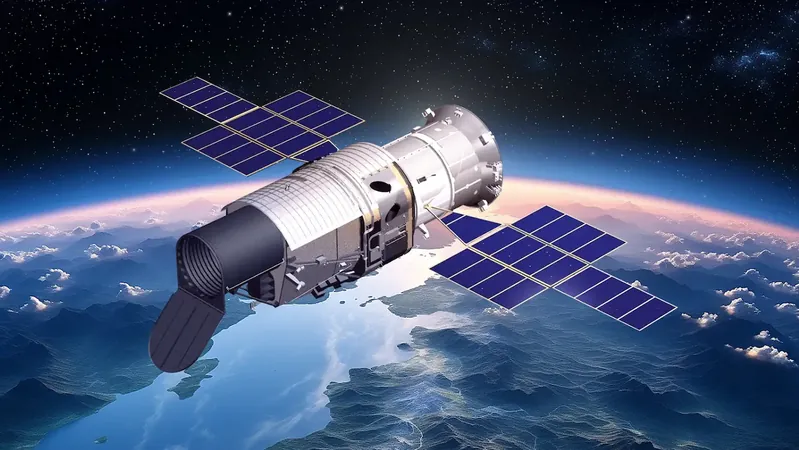
Game-Changer! Chinese Space Station Telescope to Pioneer Exomoon Discoveries
2025-01-09
Author: Siti
Introduction
The cosmos is about to unleash its secrets, thanks to the groundbreaking capabilities of the Chinese Space Station Telescope (CSST). This innovative telescope has been designed to detect free-floating planets (FFPs) and the elusive exomoons that may orbit them, revealing a treasure trove of new astronomical phenomena.
Understanding Exomoons and Free-Floating Planets
When planets are ejected from their native star systems due to dynamic interactions, they may still carry their satellites with them, forming a unique opportunity to study these “exomoons.” CSST is gearing up to conduct an extensive microlensing survey that can unveil a significant number of these low-mass free-floating planet events.
Capabilities of the CSST
Exciting simulations of CSST light curves suggest that the telescope can effectively identify various exomoons based on their mass ratios to their parent planets and their distances from them. For instance, in scenarios involving Neptune-class free-floating planets within the Galactic disk, CSST shows the capacity to detect Earth-mass satellites across a wide range of distances, from approximately 0.01 to 0.1 astronomical units (AU). Remarkably, it can detect even smaller Moon-mass satellites (with mass ratios around 1/1000) when they are closely orbiting their planet at about 1 AU.
Limitations and Comparisons
However, there’s a twist! CSST’s sensitivity decreases significantly when the source star is an M dwarf, which could limit its ability to detect certain systems. For those looking for even greater discovery potential, the upcoming Roman Space Telescope demonstrates superior sensitivity, particularly in identifying exomos near M-dwarf sources, setting the stage for a new age of understanding planetary systems.
Interesting Research Findings
Research indicates that some detectable Neptune-Earth systems, observed by both CSST and Roman, could be experiencing notable tidal heating. This phenomenon is fascinating as it may hint at active geological processes on these planets and their moons.
Conclusion and Future Prospects
Astrophysicists are keenly analyzing the complex data models, using polar coordinates to map detection efficiencies. Areas where detections are highly probable are highlighted in vivid colors on these distributions, allowing researchers to pinpoint where their searches should be focused.
As CSST prepares for its scientific mission, the potential for groundbreaking discoveries about exomoons and free-floating planets has the astronomical community buzzing with excitement. Will CSST uncover evidence of alien moons? Only time will tell, but one thing is certain: we’re on the brink of a cosmic revelation! Stay tuned as more updates unfold from this stellar exploration!

 Brasil (PT)
Brasil (PT)
 Canada (EN)
Canada (EN)
 Chile (ES)
Chile (ES)
 Česko (CS)
Česko (CS)
 대한민국 (KO)
대한민국 (KO)
 España (ES)
España (ES)
 France (FR)
France (FR)
 Hong Kong (EN)
Hong Kong (EN)
 Italia (IT)
Italia (IT)
 日本 (JA)
日本 (JA)
 Magyarország (HU)
Magyarország (HU)
 Norge (NO)
Norge (NO)
 Polska (PL)
Polska (PL)
 Schweiz (DE)
Schweiz (DE)
 Singapore (EN)
Singapore (EN)
 Sverige (SV)
Sverige (SV)
 Suomi (FI)
Suomi (FI)
 Türkiye (TR)
Türkiye (TR)
 الإمارات العربية المتحدة (AR)
الإمارات العربية المتحدة (AR)